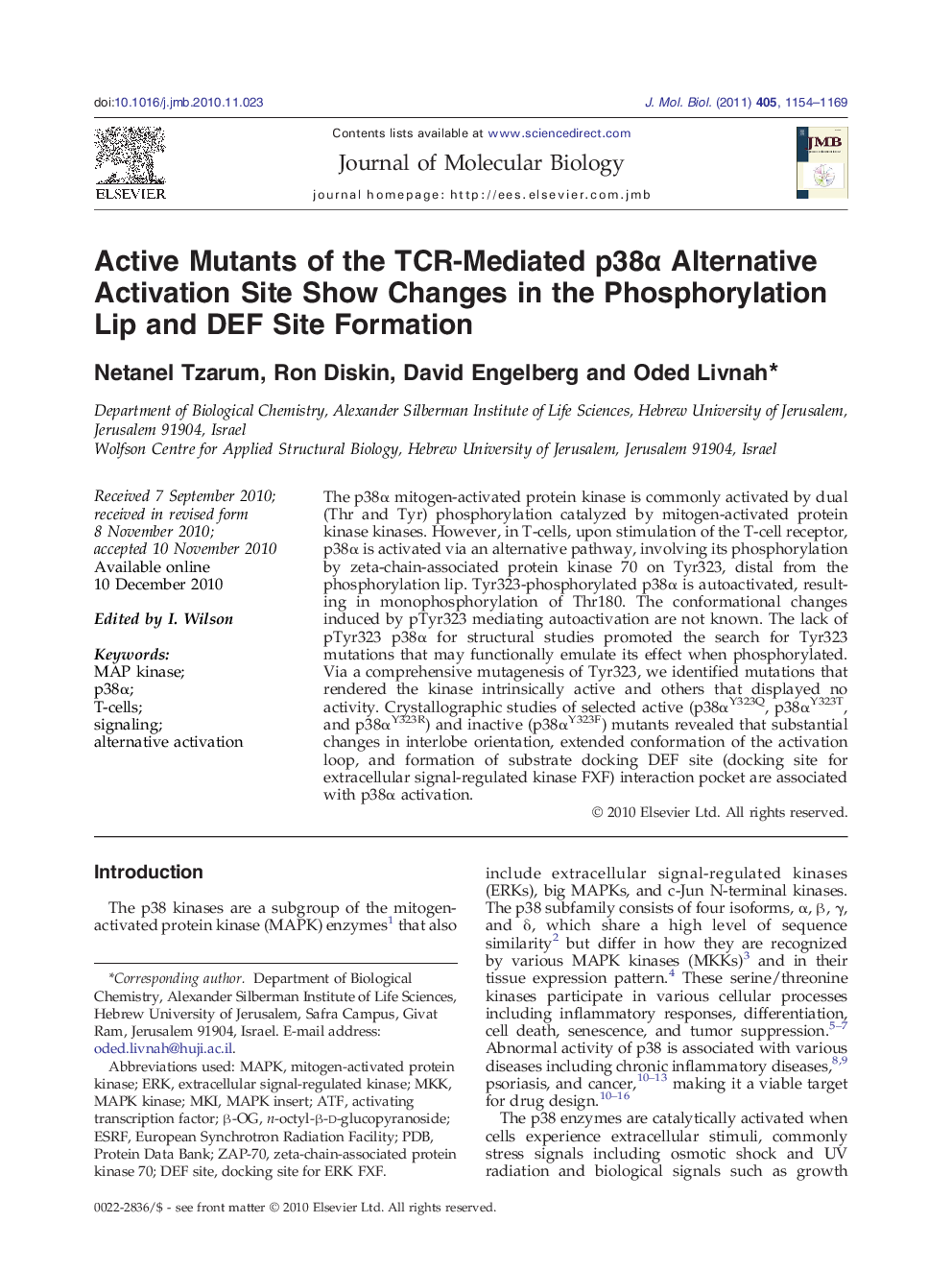| Article ID | Journal | Published Year | Pages | File Type |
|---|---|---|---|---|
| 2185489 | Journal of Molecular Biology | 2011 | 16 Pages |
The p38α mitogen-activated protein kinase is commonly activated by dual (Thr and Tyr) phosphorylation catalyzed by mitogen-activated protein kinase kinases. However, in T-cells, upon stimulation of the T-cell receptor, p38α is activated via an alternative pathway, involving its phosphorylation by zeta-chain-associated protein kinase 70 on Tyr323, distal from the phosphorylation lip. Tyr323-phosphorylated p38α is autoactivated, resulting in monophosphorylation of Thr180. The conformational changes induced by pTyr323 mediating autoactivation are not known. The lack of pTyr323 p38α for structural studies promoted the search for Tyr323 mutations that may functionally emulate its effect when phosphorylated. Via a comprehensive mutagenesis of Tyr323, we identified mutations that rendered the kinase intrinsically active and others that displayed no activity. Crystallographic studies of selected active (p38αY323Q, p38αY323T, and p38αY323R) and inactive (p38αY323F) mutants revealed that substantial changes in interlobe orientation, extended conformation of the activation loop, and formation of substrate docking DEF site (docking site for extracellular signal-regulated kinase FXF) interaction pocket are associated with p38α activation.
Research Highlights► The alternative T-cell-receptor-induced activation of p38α was studied via X-ray crystallography. ► We have used intrinsically active mutants that could mimic the Tyr323 phosphorylation state. ► The structure revealed substantial conformational changes in the kinase interlobe orientation, phosphorylation loop, and the formation of the DEF site interaction pocket. ► Taken together, these factors could promote Thr180 phobephrylation and autoactivation.
